How to Explain Your Art
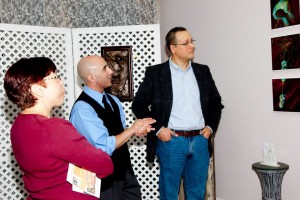 I honestly enjoy talking about my art, the process, the technique, the historical influences, and the possible story behind each piece. I believe that being able to explain your art is very important and increases credibility as an artist. I guess it applies to any craft. A while ago I posted something about this subject on twitter and it caused a little outrage from people who misunderstood “learning about your craft” with “going to school” and getting a formal education. Let me clarify that getting “formal” education is a good thing, but that’s not what I refer to. Leonardo di ser Piero da Vinci was autodidact. I guess that clarifies the point. It is not about formal education but to seek understanding about what you do and why because it helps you grow as an artist. If you can explain it, people will be more interested in what you do. This is what I suggest to aspiring artists:
I honestly enjoy talking about my art, the process, the technique, the historical influences, and the possible story behind each piece. I believe that being able to explain your art is very important and increases credibility as an artist. I guess it applies to any craft. A while ago I posted something about this subject on twitter and it caused a little outrage from people who misunderstood “learning about your craft” with “going to school” and getting a formal education. Let me clarify that getting “formal” education is a good thing, but that’s not what I refer to. Leonardo di ser Piero da Vinci was autodidact. I guess that clarifies the point. It is not about formal education but to seek understanding about what you do and why because it helps you grow as an artist. If you can explain it, people will be more interested in what you do. This is what I suggest to aspiring artists:
Find yourself in time
Newsflash!!! “There is nothing new under the sun“. This is at times an ego check to artists. You are only as unique as the variation and “spirit” you provide to your art. I suggest you look into an art history book and find yourself in time. All we do have an origin and an influence somewhere in the past. Get to know the arts that influence your art, and where your inspiration draws from. Don’t be intimidated by comparisons from artists from the past. That should be a compliment.
Assess your logic
No matter how “random” you think your art is, there must be a logic behind it. This logic can be found in the use of color, the strokes, rhythm, as it can be conceptual and philosophical. You can find this logic in every movement of art including modern art. Find your logic. When you do and explain it to people they will feel more involved with your work than you could imagine.
Assess your emotions
Maybe the explanation to your logic is found in what you feel when you are working. Art is a sensorial experience after all. Some people like to listen to a specific kind of music to get in a specific kind of mood. Anger, happiness, relaxation, tension, hope, sadness, loss, loneliness… there are many emotions that transpire in our work that if we can’t identify them someone would.
Now you can tell your story and provide the viewers with the “spirit” of the work and engage them even more. The more you immerse yourself in understanding your craft, the better you get at it, the more inspiration you find, the more engagement from your viewers you reach. Learn about other styles too, specially those that came before and after the one that identify yours. The more you know, the more your confidence as an artist will grow too. Educate yourself to explain your art.

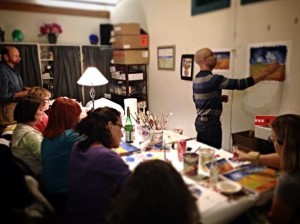 The more I learn about learning, the more I am convinced that learning is a transformative experience in which knowledge is shared and each personal experience is intertwined as part of a larger story. I am an educator, instructional designer, and fine artist. I teach with a holistic view of the world but focusing on the specific needs of the learner and their experience. I aim to guide learners to connect and use knowledge in practical ways. Experience motivates theory, and theory substantiates practice as experience supports theory. In my practice, I provide learners with opportunities for sharing knowledge and experience, exploration, experimentation, and discovery, in both individual and collaborative levels.
The more I learn about learning, the more I am convinced that learning is a transformative experience in which knowledge is shared and each personal experience is intertwined as part of a larger story. I am an educator, instructional designer, and fine artist. I teach with a holistic view of the world but focusing on the specific needs of the learner and their experience. I aim to guide learners to connect and use knowledge in practical ways. Experience motivates theory, and theory substantiates practice as experience supports theory. In my practice, I provide learners with opportunities for sharing knowledge and experience, exploration, experimentation, and discovery, in both individual and collaborative levels.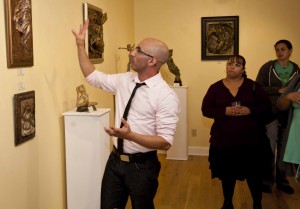 Seeing how knowledge becomes alive is of great motivation and validation for the effort. It is also a learning experience for myself. “Individuals are not just the result of their environment or life circumstances, but rather individuals consciously contribute to their environment or life circumstances to change their environments and themselves.” It is a rewarding experience to see and being part of the transformation, more so when I see my students serving others for the same purpose.
Seeing how knowledge becomes alive is of great motivation and validation for the effort. It is also a learning experience for myself. “Individuals are not just the result of their environment or life circumstances, but rather individuals consciously contribute to their environment or life circumstances to change their environments and themselves.” It is a rewarding experience to see and being part of the transformation, more so when I see my students serving others for the same purpose.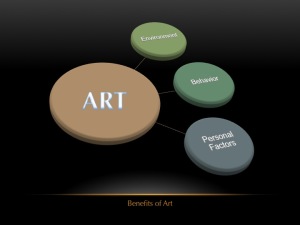
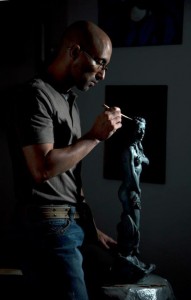
How to Prepare for Your Show
Close your eyes and imagine your show. Live the moment. It is like a party. Envision how your art is displayed, how people move around to see your art, what they are eating and drinking, the background music… Visualize every detail. Now, lets prepare to show our work.
I prefer to take care of most aspects of my shows myself instead of putting it in the hands of other people. I do surround myself with people I trust to help me shape the scene and to alleviate my burden. Seek their advice, listen to their opinion, but most importantly understand their support. Make sure is people who can take care of things without prompting. Otherwise you will add unnecessary stress to yourself.
How to prepare for your show? While there are many intricacies in presenting an art exhibit this checklist might help you get started. Before you decide you want to have an art exhibit you need to be ready with a few things.
Word of Advise: Make sure the amount of pieces fits the venue. You don’t want your show to look like a flea market.
I try to have this at least 3 months in advance. That time allows for you to prepare and promote properly.
There are plenty of examples and templates online in how to write a press release. If you have someone to do it for you is fine. Some people charge to write press releases. I prefer to write it myself then ask other people to edit whatever necessary.
Again, if you can’t do it yourself someone else can do it. I design my own printed material. It makes me feel closer to the show.
Use your printed material, mailing lists, online media, social media, word of mouth, tell your friends to bring friends… anything that can being people to your show.
Keep it simple to the extent possible unless someone else wants to pay for it. You can also ask for sponsors or wine tastings to be present. The possibilities are endless and it all depends on your budget and preferences.
Heads up! There will be a lot of stress on getting ready. Go over your plan and check every detail. Pretend you are a guest and go through all of it. Be flexible to changes that won’t change the overall look and feel of the show. There are things not deserving the stress.
Be ready to enjoy the people celebrating you and your work, make new connections, be ready to answer any questions that could be presented, and have fun. It is your party!